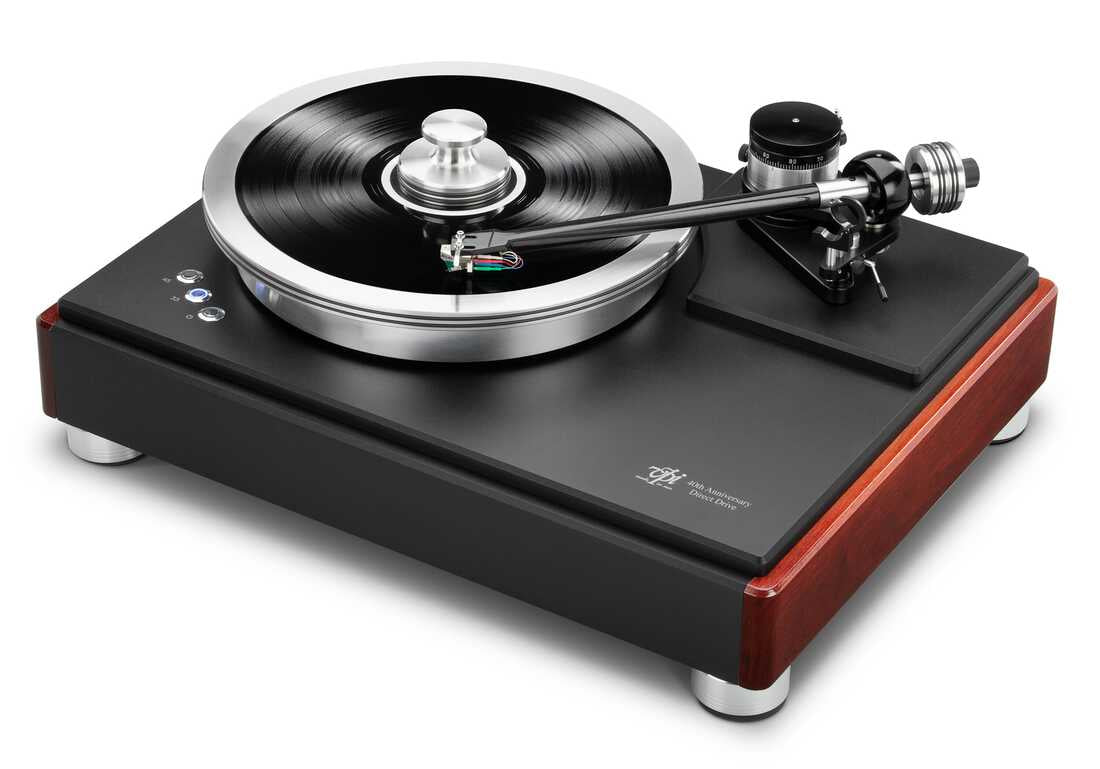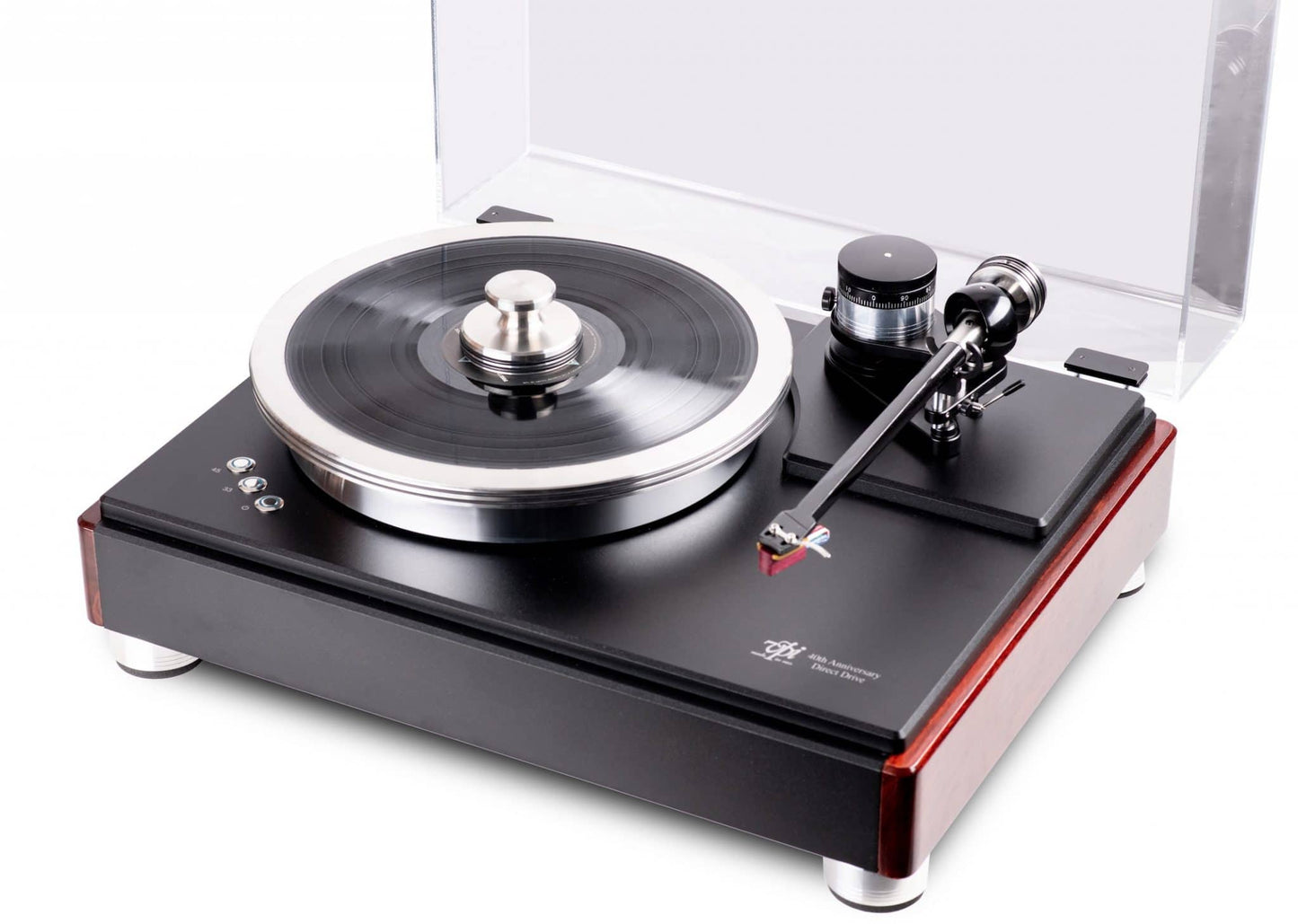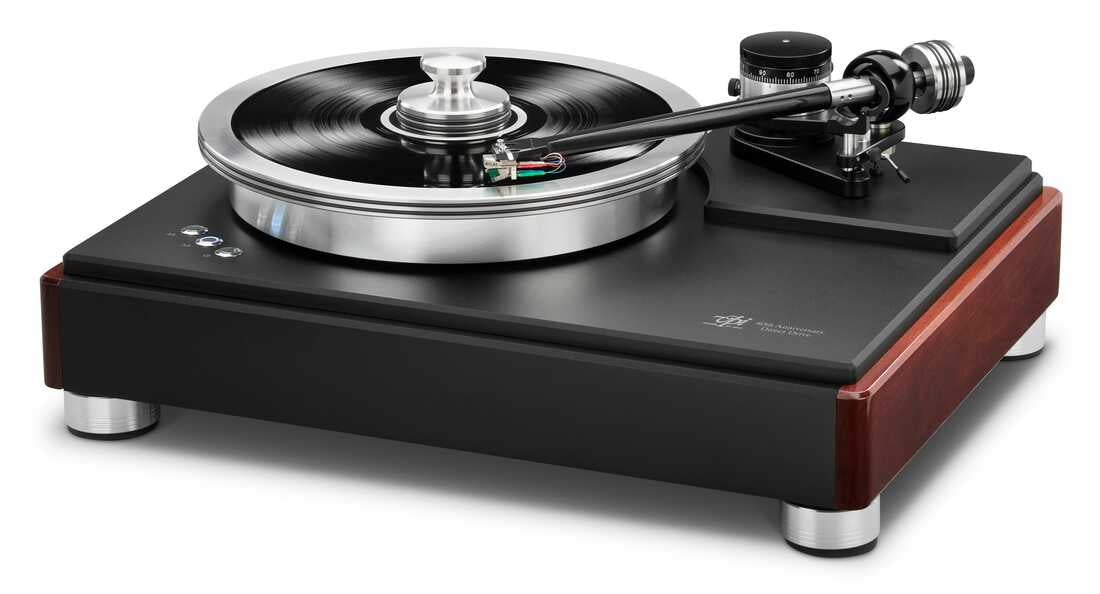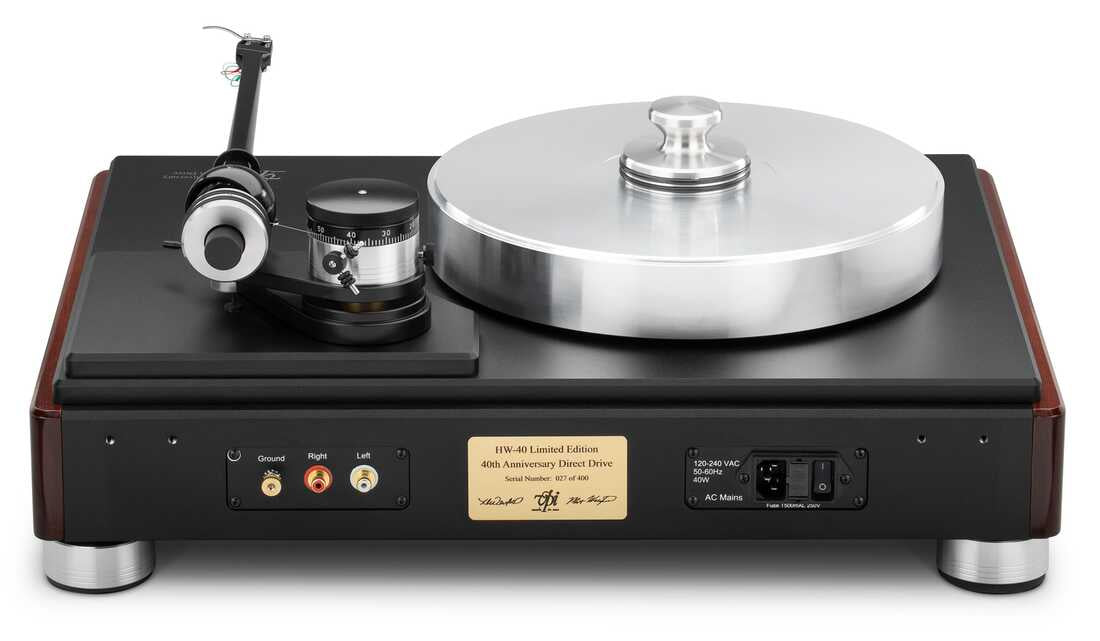Couldn't load pickup availability
HW-40 includes a newly designed, extra powerful, yet extra-quiet direct-drive motor. The motor coils are constructed of a solid copper, square, cross-section wire embedded in a composite material for increased dampening. The high-precision, high-efficiency motor, with a huge amount of torque (the 'table gets up to speed in under one second) also provides excellent cooling and near-optimal interaction of the electromagnetic conductors within the magnetic circuit. Plus, the unique iron-less coil assembly avoids the use of magnetic materials in its construction. When the latter feature is combined with overlapping V-shaped coil construction, the motor eliminates the cogging that accompanies traditional direct-drive motors, resulting in unprecedented rotational smoothness and a virtually unmeasurable wow-and-flutter figure.
HW-40's direct-drive system achieves 93% efficiency and a torque of 2.68 Nm/sec. You can accelerate the 25-pound platter assembly to full speed and decelerate to a stop in one second. Mechanically, the HW-40 motor assembly is milled from a solid billet of 6061 aluminum and precision-fitted to the rotor, stator, and platter bearing to create an integrated drive system that minimizes vibration and noise. The motor assembly uses a five-point mounting to secure it to the top panel of the housing.
HW-40 motor stator coils are constructed of solid copper, square cross section wire embedded in a high-temperature composite material for increased vibration damping. The stator's tubular construction also resists the flexing under load that affects substrate-base coil designs. This construction also provides excellent cooling and near-optimal interaction of the electromagnetic conductors within the magnetic circuit. The unique iron-less coil assembly avoids the use of magnetic materials in its construction. The stator coils also feature a overlapping V-shaped coil construction. Such aspects smooth the rotational transition from pole to pole, eliminating the cogging that accompanies simpler direct-drive motor designs. Additionally, the rotor magnets are shaped to smooth the back EMF (electromotive force) from the stator as the they transition from pole to pole. This feature eases the demands on the motor drive circuitry and power supplies. Combined, the thin-gap motor components produce an unprecedented rotational smoothness and virtually unmeasurable wow-and-flutter.
Because VPI retained the original BLDC motor components of its 2012 Classic Drive model, it focused on the mechanical design of the new motor. Working with engineers at long-term machine shops and learning from found Harry Weisfeld's experiences with the 2012 design, the first step was to design the massive can-style housing to support the stator assembly and machine it from a solid billet of T6061 aluminum. Its design is optimized to create a solid platform to support the stator and act as a vibration sink, effectively absorbing motor vibrations into the 1/2"-thick MDF-damped aluminum plinth through a solid five-point mounting. The rotor/magnet assembly is pressed into the aluminum platter support hub. It, too, is milled from a solid billet. The hub housing provides mass damping, absorbing, and dissipating drive vibrations into its mass. The platter is engineered to securely mate to the hub, improving damping while still allowing easy removal for shipping. The rotor hub is precision-machined to hold the 100mm rotary encoder system that provides "2500 timing counts per revolution of position" feedback to the servo amplifier. At 33RPM, this provides 1423 counts/sec of extrapolated resolution contributing to the 'tables' extremely low wow-and-flutter as well as exceptional speed accuracy.
The motor-drive electronics are being sourced from one of the leading companies in the industry. Historically, VPI 'tables have shown increasing improvement in the foundation and purity of music as the torque has increased. Such evolution has involved utilizing massive platters, multiple belts, flywheels, dual flywheels, and dual motors through rim drive models. The focus for the evolution of the HW-40 motor was to increase the running torque and improve speed stability without affecting the silent noise floor. A design challenge stemmed from using a motor that is more powerful and efficient running at 2-3K RPMs and running it at 33RPM. Adding the mass and inertia of a 27-pound platter, it became a challenging feat to manage the drive signal to obtain our torque and speed stability goals while maintaining low drive noise. Working closely with motor-control engineers while monitoring/listening to the motor noise using an unmodulated disc, VPI was able to fine tune the motor drive for high torque and silent operation.
VPI addresses two specific properties concerning isolation on HW-40. First, it provides a high level of isolation to structural borne and airborne vibration. Second, it cleanly integrates the isolation into the look of the 'table. After evaluating dozens of prototypes and an endless supply of damping materials, the 'table isolation was finalized. HW-40 is the first VPI table to benefit from these efforts. Via a combination of reinforced composite absorption pads coupled with low-durometer horizontal isolators and their mounting assemblies, HW-40's suspension interacts with the mass of the 'table to provide excellent broadband isolation in both the vertical and horizontal axes. The Elastomeric composite pads provide high-energy absorption with less than 10% compression set. No plasticizers interact with cabinet surfaces. he combination and execution of the design elements guarantee consistent long-term performance of the isolation system. Sonically, the results are heard as an improved sense of focus and articulation in the bass that extends well into the lower midrange.



